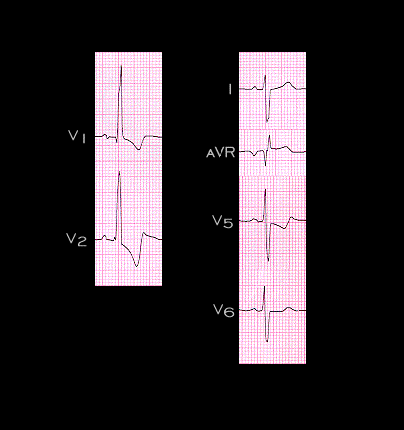
The tall R waves and absence of S waves in leads V1 and V2 are caused by the rightward and anterior forces generated by the severely hypertrophied right ventricle and the proximity of the right ventricle to these leads. The broad terminal S wave in leads I, V5 and V6 and R wave in aVR signify that terminal depolarization is oriented more to the right and more anteriorly than normal. They reflect depolarization of the hypertrophied pulmonary conus.
